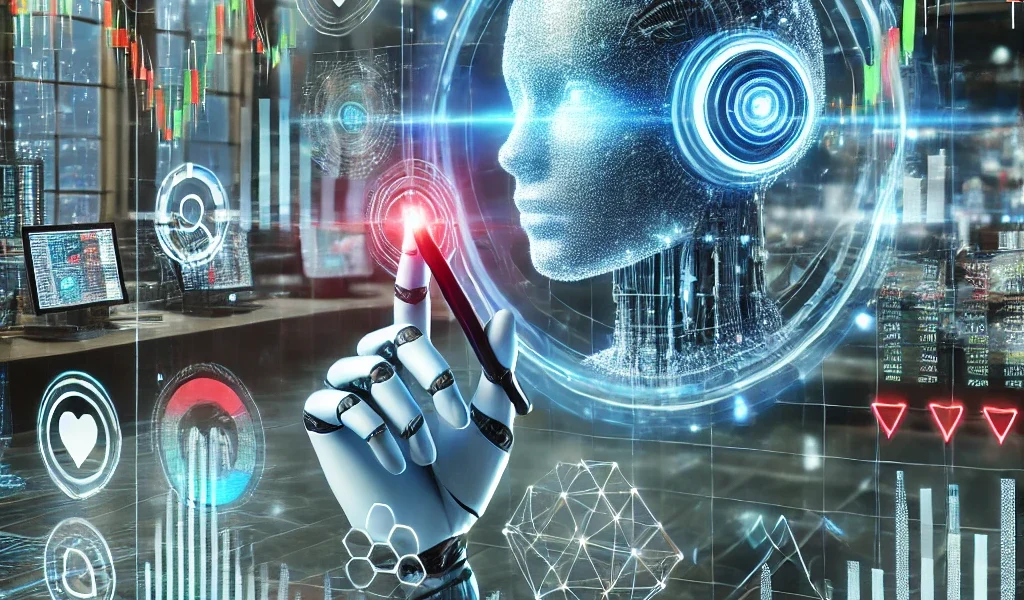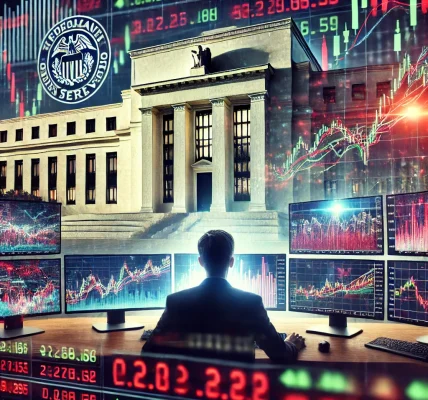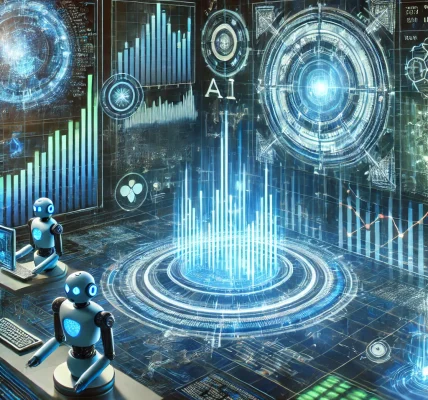Introduction
The stock market has evolved significantly with advancements in technology, and one of the most disruptive innovations is the use of AI-driven trading bots. These automated systems leverage artificial intelligence, machine learning, and big data analytics to make trading decisions with minimal human intervention.
AI trading bots are transforming the stock market by increasing efficiency, reducing emotional biases, and optimizing strategies. However, they also pose challenges, such as market manipulation risks and increased volatility. This article explores how AI-driven trading bots influence stock market trends, their benefits and drawbacks, and what investors should consider before relying on them.
What Are AI-Driven Trading Bots?
AI-driven trading bots are software programs that utilize artificial intelligence and machine learning algorithms to analyze market data, predict trends, and execute trades. These bots can process vast amounts of data in real time and react to market changes faster than human traders.
Types of AI Trading Bots:
- Market-Making Bots – These bots place both buy and sell orders to provide liquidity and profit from bid-ask spreads.
- Arbitrage Bots – They exploit price discrepancies across different exchanges to generate profits.
- Trend-Following Bots – They analyze market trends and execute trades based on momentum.
- Mean Reversion Bots – These bots assume that asset prices will revert to their historical averages.
- Sentiment Analysis Bots – They scan news articles, social media, and financial reports to gauge market sentiment.
The Impact of AI-Driven Trading Bots on Stock Market Trends
1. Increased Market Efficiency
AI trading bots analyze and process large datasets quickly, making markets more efficient. By identifying price discrepancies and arbitrage opportunities, they help reduce inefficiencies and enhance liquidity.
2. Reduction of Human Biases
Emotional decision-making often leads to poor investment choices. AI bots remove psychological biases such as fear and greed, executing trades purely based on data-driven insights.
3. High-Frequency Trading (HFT) Influence
Many AI bots operate under High-Frequency Trading (HFT) strategies, executing thousands of trades within milliseconds. HFT contributes to tighter bid-ask spreads and improved price discovery but also increases market volatility.
4. Volatility and Flash Crashes
While AI bots enhance market efficiency, they can also contribute to sudden price swings. Algorithmic trading has been linked to flash crashes, where markets experience sharp declines in seconds due to rapid automated sell-offs.
5. Algorithmic Market Manipulation
Some sophisticated bots engage in market manipulation tactics such as spoofing (placing large orders without intending to execute them) and layering (placing multiple fake orders to create misleading demand/supply signals). Regulatory bodies are constantly adapting to counter these manipulative tactics.
6. Democratization of Trading
AI-driven trading bots are no longer exclusive to institutional investors. Retail investors now have access to automated trading strategies through platforms like Trade Ideas, Algobots, and MetaTrader, allowing them to compete with professional traders.
Advantages of AI Trading Bots
- Speed and Efficiency – AI bots execute trades at lightning speed, capitalizing on market opportunities faster than human traders.
- 24/7 Trading Capability – Unlike human traders, bots operate around the clock, ensuring investors never miss trading opportunities.
- Data-Driven Decision-Making – AI bots analyze historical data, real-time market trends, and financial news to make informed trading decisions.
- Risk Management – Advanced bots use risk assessment tools to minimize losses by implementing stop-loss orders and hedging strategies.
- Cost Reduction – Automated trading reduces transaction costs by minimizing manual intervention.
Challenges and Risks of AI Trading Bots
- Overfitting to Historical Data – AI models trained on historical data may struggle in unpredictable market conditions.
- Regulatory Concerns – The rise of AI-driven trading has prompted regulators to implement stricter guidelines to prevent market manipulation and unfair advantages.
- Technical Failures – Glitches or incorrect algorithmic coding can lead to massive financial losses in seconds.
- Lack of Human Judgment – AI bots lack human intuition and may not adapt well to sudden macroeconomic or geopolitical shifts.
- Ethical Considerations – AI-driven trading raises concerns about fairness, as wealthier investors can access more advanced algorithms than retail traders.
How Investors Can Benefit from AI Trading Bots
- Choose Reliable Platforms – Use trusted AI-driven trading platforms with strong reputations and regulatory compliance.
- Monitor AI Performance – Regularly assess the bot’s performance and adjust strategies when necessary.
- Diversify Investments – Relying solely on AI bots can be risky; investors should diversify across asset classes and strategies.
- Understand Algorithmic Strategies – Even with automation, understanding how AI bots function helps investors make informed decisions.
- Stay Updated with Regulations – Keep up with financial regulations governing algorithmic trading to ensure compliance.
Conclusion
AI-driven trading bots have revolutionized the stock market by enhancing efficiency, minimizing human biases, and democratizing trading. However, they also introduce risks such as increased market volatility, technical failures, and ethical concerns.
For investors, AI trading bots can be a valuable tool, but they should be used with caution. Understanding how these bots function, choosing reliable platforms, and balancing AI-driven strategies with traditional investment approaches can help maximize returns while mitigating risks.
As AI technology continues to evolve, its role in the stock market will only grow, shaping the future of trading in ways we are yet to fully understand.
Disclaimer: This article is for informational purposes only and should not be




